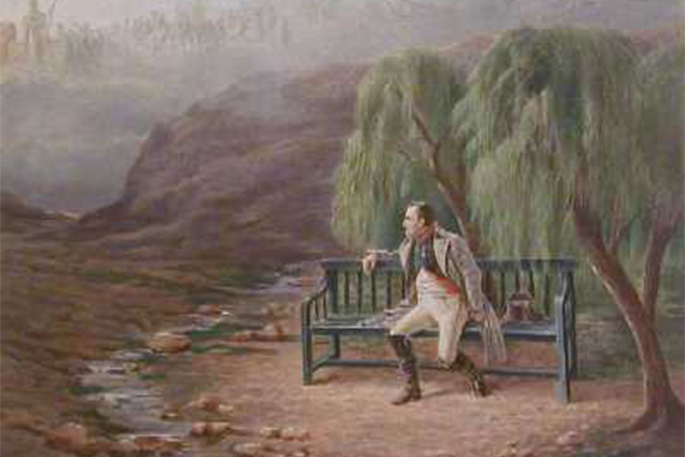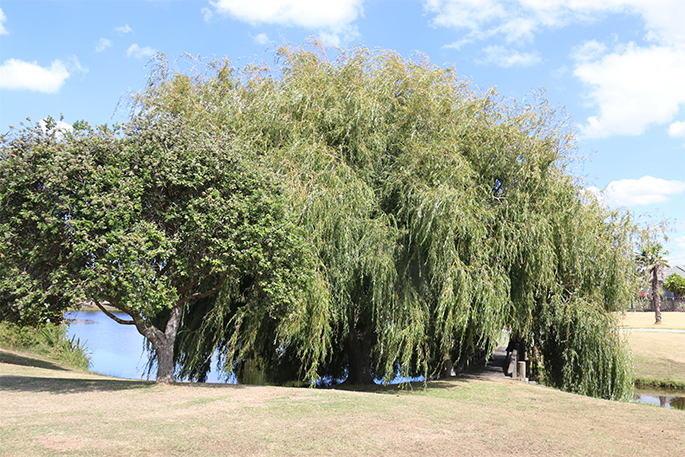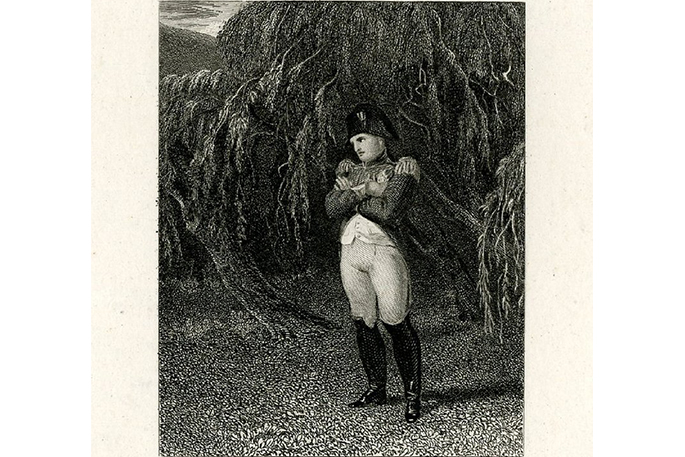While exploring the Papamoa waterways, I came across an arched footbridge with an overhanging weeping willow.
Taking a photo of this rather romantic scene, I posted the picture to Facebook.
Tauranga City Councillor Steve Morris immediately responded with a cryptic photo of a painting of St Helena and a question: 'Can you guess the story behind this famous Papamoa tree?”
Bemused, I called him. Earlier in the year, he'd met a group of residents at the footbridge to discuss how low the weeping willow was hanging. As it turns out, one of them told him an interesting story.

Steve Morris at the foot of the willow tree in Papamoa
'Apparently it was grown from a cutting of the tree above Napoleon Bonaparte's grave on the island of Saint Helena in the South Atlantic Ocean,” says Steve. 'It's not so much a grandchild of Napoleon's tree, but genetically the same tree.”
Fascinated, I quickly did a Google search.
From 1815 to 1821, Napoleon was exiled to the island of Saint Helena, after his crushing defeat at Waterloo.
During his six-year sojourn until his death, Napoleon had few distractions to take up his time, and was reported to have turned to gardening.

Painting of Napoleon Bonaparte. Image: 'Napolean's Willow' - Joan Norlev Taylor
According to a website devoted to the real Napoleon's willow, one tree in particular 'became associated with Napoleon, because it was said that he used to sit under it. It was his special place for tranquillity and reflection, and he asked to be buried under its shade”.
In 1821, he was buried on the island 'in a lonely spot near a spring shaded by two weeping willows”.
Any tree that grows as a result of a cutting is a kind of duplicate tree, and as a result, such a tree was known as Napoleon's willow wherever it was planted.
In September 1837, Francois Le Lievre - a staunch Bonapartist - stole two willow slips and a slice of bark from the tree. He was certain it held Bonaparte's spirit. The willow shoots made it to Akaroa, where one flourished and, according to some, spawned many descendants in Canterbury.
The story goes that one of those cuttings is the willow tree next to the Papamoa footbridge.

As a newly self-appointed tree detective, I decided to phone Greg Clarke from Hawridge Developments, who's responsible for much of the Palm Springs property development. He suggested I call Richard Hart, who has been involved in the landscaping of the waterways and subdivisions and has a good knowledge of the ecology of the area, including its notable trees.

'I'd be surprised if it was historic,” says Richard. 'The whole water course through the Papamoa area is constructed, although it's very feasible that this could be a cutting from the Akaroa tree.
'Willows grow very easily from cuttings. One thing would be to identify what species the tree is.
'Even if it is just a story, it sounds like a damn good one.”
He contacted me later that day, saying: 'I can confirm it is a weeping willow (Salix babylonica), so the story is possible.”
A book titled 'Napolean's Willow' has been written about the tree that grew on the island of Saint Helena by author Joan Norlev Taylor. She traces the history of the tree to Akaroa, New Zealand.

Napolean under his willow tree

Steve Morris on the footbridge in Papamoa under the willow tree



0 comments
Leave a Comment
You must be logged in to make a comment.